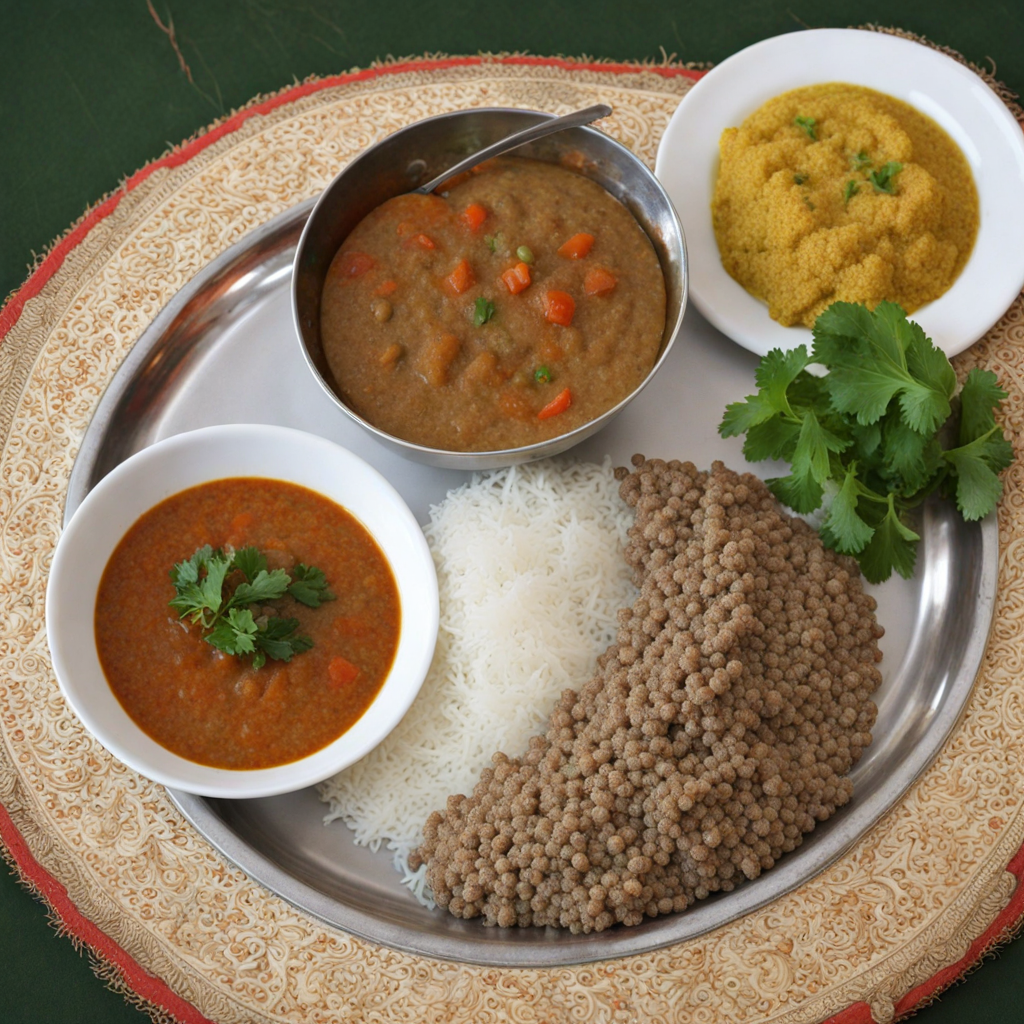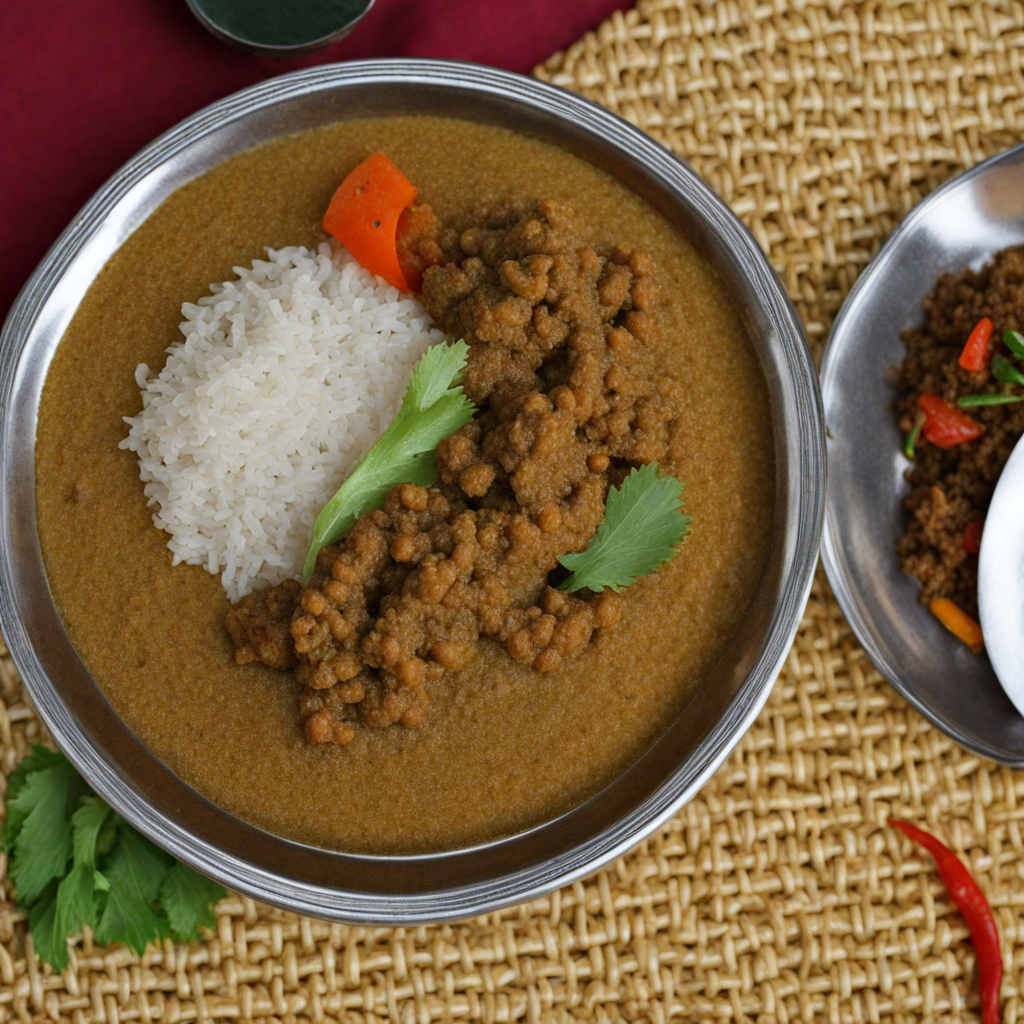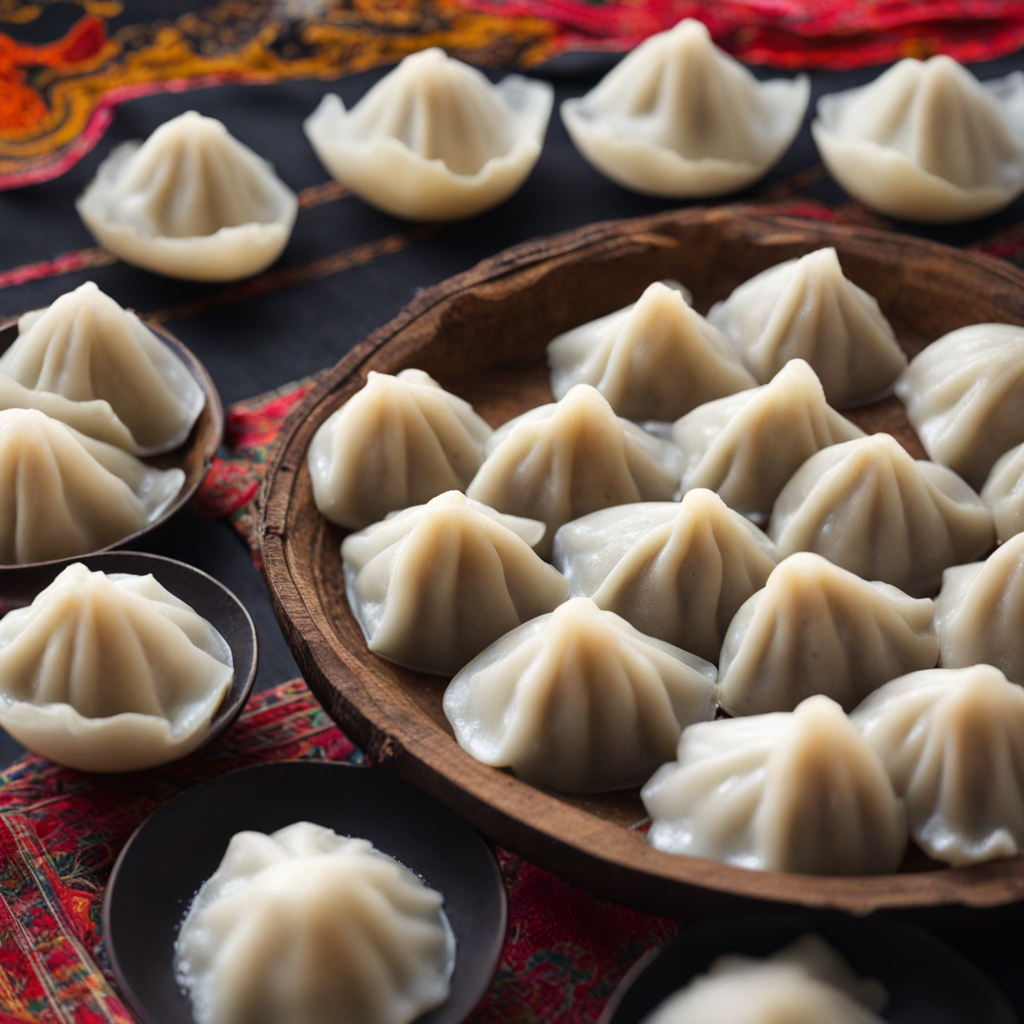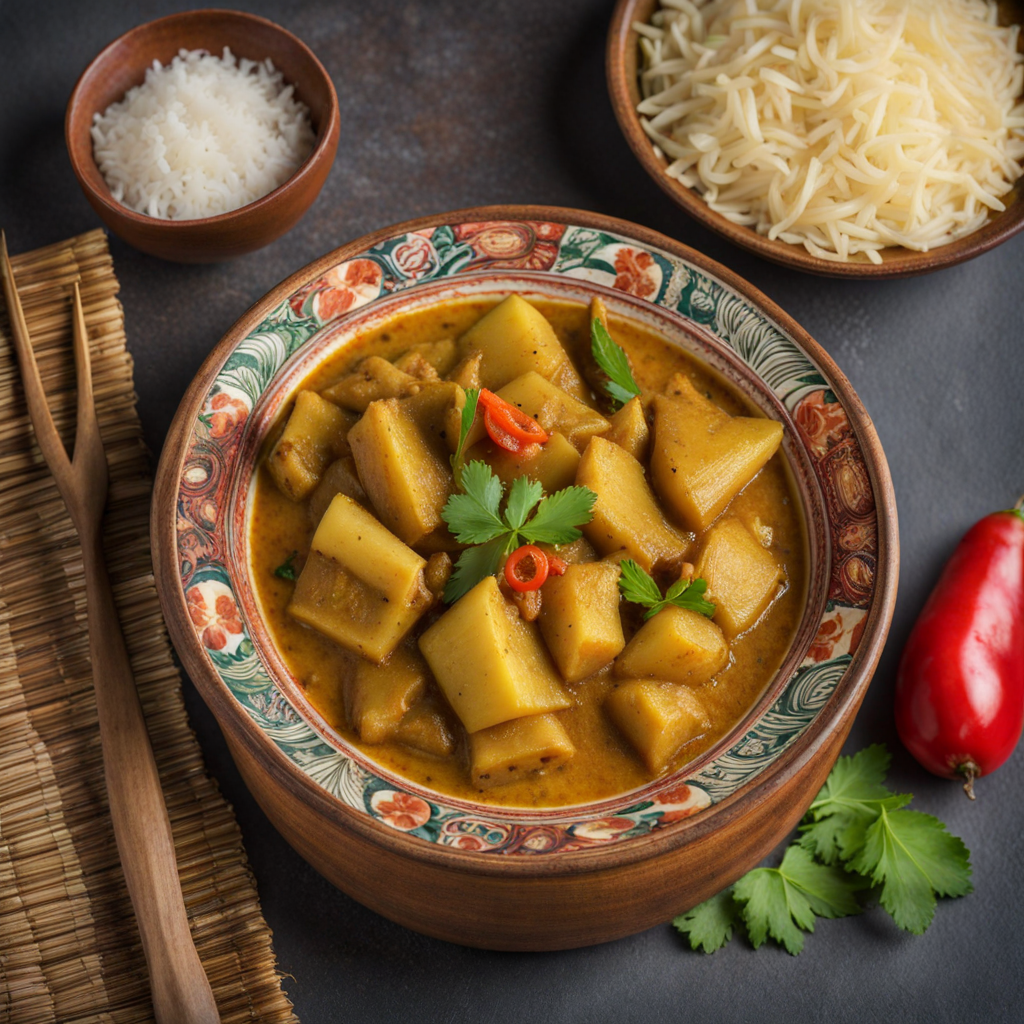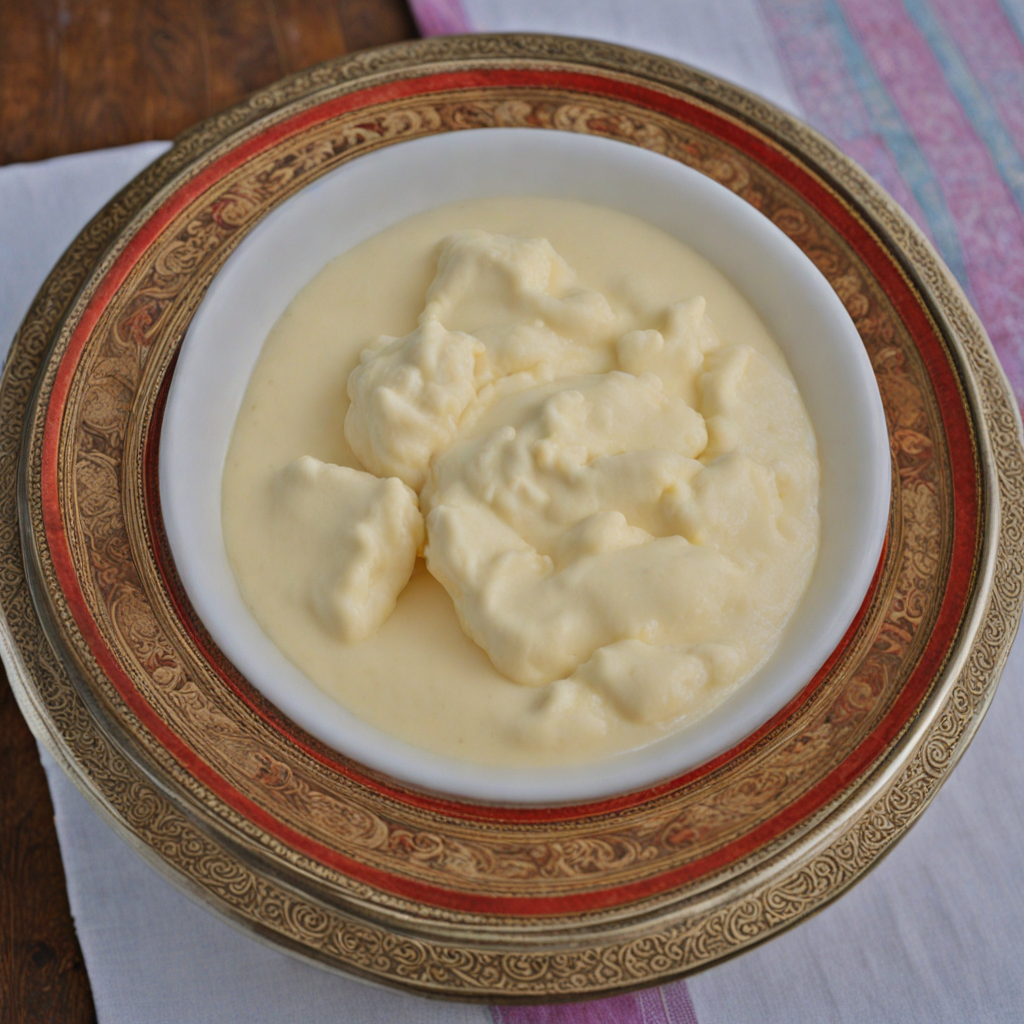Dhido
Dhido is a traditional Nepali dish that showcases the country’s rich culinary heritage. It is made from buckwheat or millet flour, which is cooked with water to create a thick, dough-like consistency. Unlike the more commonly known rice or wheat-based dishes, Dhido offers a unique texture and flavor profile. The process involves stirring the mixture vigorously while it cooks, resulting in a hearty, dense form that can be both filling and nutritious. Its nutty flavor and slightly earthy undertones make it a delightful departure from standard staples. Typically served as a staple in rural areas of Nepal, Dhido is often accompanied by a variety of side dishes, enhancing its taste and nutritional value. Common pairings include lentil soup (dal), pickled vegetables (achar), and sautéed greens, which provide a colorful and balanced meal. The combination of Dhido with these sides creates a symphony of flavors, from the spiciness of the achar to the comforting warmth of dal, allowing one to explore the diverse tastes of Nepali cuisine. This dish is not just about sustenance; it reflects the communal aspect of Nepali culture, often enjoyed during gatherings and celebrations. For those adventurous eaters seeking to broaden their palate, trying Dhido is a must. Its unique preparation method and wholesome ingredients make it a nourishing choice, while the versatility of toppings and accompaniments ensures that each experience can be slightly different. Whether enjoyed as a simple meal or dressed up with various side dishes, Dhido is a celebration of Nepal's culinary identity, inviting food lovers to indulge in a truly authentic taste of the Himalayas.
How It Became This Dish
The History and Cultural Significance of ढिडो (Dhido) in Nepal Nestled in the heart of the Himalayan region, Nepal is a country renowned for its diverse culture and rich culinary heritage. Among its many traditional foods, ढिडो (Dhido) stands out as a staple that not only nourishes but also embodies the spirit and resilience of the Nepali people. This simple yet fulfilling dish has a history that reflects the agricultural practices, geographical challenges, and cultural values of the communities that have embraced it over the centuries. Origins of Dhido The origins of Dhido can be traced back to the rural agricultural societies of Nepal, where it was developed as an alternative to rice and wheat, particularly in the hilly and mountainous regions. Unlike rice, which requires extensive irrigation, or wheat, which thrives in the Terai plains, Dhido is made primarily from buckwheat or millet flour—grains that are more resilient to the challenging climatic conditions of the hills. Buckwheat, a key ingredient in Dhido, is a high-altitude crop that flourishes in the cold, harsh terrains of Nepal. Its cultivation has been a tradition for centuries, with evidence suggesting that it has been grown in the region since ancient times. Millet and buckwheat are not only hardy but also rich in nutrients, making them essential for the sustenance of mountain communities where food security is a constant concern. Cultural Significance Dhido transcends mere sustenance; it is deeply woven into the fabric of Nepali culture. The preparation and consumption of Dhido are often accompanied by social rituals that reinforce communal bonds and familial ties. Traditionally, Dhido is made by boiling water and gradually adding flour while stirring continuously to create a thick, sticky porridge. This communal act of cooking brings families and communities together, often accompanied by stories, laughter, and shared experiences. In many rural households, Dhido is a daily staple, providing the energy necessary for labor-intensive agricultural practices. It is often served with a variety of accompaniments, including vegetable curries (tarkari), lentil soup (dal), or fermented vegetables (achar). This combination of Dhido with other dishes not only enhances its flavor but also reflects the idea of balance in Nepali cuisine, where different food groups are consumed together for optimal nutrition. Moreover, Dhido carries a significant cultural weight during festivals and special occasions. For example, during the harvest festival of Dashain and Tihar, Dhido may be prepared as a symbol of gratitude for the bounty of the earth. In this context, it is not merely food but an expression of gratitude and reverence for nature’s gifts. Development Over Time As Nepal has evolved, so too has the preparation and perception of Dhido. Historically, it was primarily consumed in rural areas, but urbanization and globalization have introduced it to a wider audience. In recent years, there has been a growing trend of rediscovering traditional foods among the urban elite and younger generations, who are increasingly aware of the health benefits of consuming whole grains and local ingredients. With the rise of food tourism in Nepal, Dhido has gained recognition beyond its local roots. It is often featured in culinary tours and cultural experiences designed for tourists seeking authentic Nepali cuisine. This exposure has led to a renaissance of interest in traditional foods, prompting chefs and home cooks alike to experiment with Dhido by pairing it with contemporary flavors and international cuisines. However, the modernization of Dhido's preparation has sparked discussions within Nepali society about authenticity and the preservation of culinary traditions. While some advocate for traditional methods of cooking and serving Dhido, others argue for innovation and adaptation to meet changing tastes and lifestyles. This tension reflects a broader global trend where traditional foods are both celebrated and reinterpreted in the face of modernization. Nutritional Value and Health Benefits The nutritional benefits of Dhido have also contributed to its resurgence in popularity. Made primarily from buckwheat or millet, Dhido is gluten-free and high in fiber, protein, and essential nutrients. Its low glycemic index makes it an excellent choice for those seeking healthier carbohydrate options. As health-conscious consumers increasingly seek alternatives to processed foods, Dhido has emerged as a wholesome and nutritious choice. Furthermore, the use of local, organic ingredients in the preparation of Dhido supports sustainable agricultural practices, which are crucial for the environment and local economies. By choosing Dhido, individuals not only enjoy a nourishing meal but also contribute to the preservation of traditional farming methods and the promotion of biodiversity in food systems. Dhido in Contemporary Nepal Today, Dhido is undergoing a transformation in its representation and consumption in both urban and rural settings. It is no longer seen solely as a humble peasant food but is increasingly recognized as a symbol of national pride and cultural identity. Health-conscious individuals and culinary enthusiasts are reimagining Dhido, incorporating it into modern dietary practices and gourmet presentations. Restaurants in major cities like Kathmandu and Pokhara are beginning to feature Dhido on their menus, often accompanied by gourmet sauces or contemporary interpretations of traditional sides. This evolution reflects a broader trend of elevating local foods to meet global culinary standards while maintaining their cultural significance. Conclusion In conclusion, Dhido is much more than just a dish; it is a reflection of the history, culture, and resilience of the Nepali people. Its roots in the agricultural practices of the hilly regions, coupled with its rich nutritional profile, make it an essential component of Nepal’s culinary identity. As the country navigates the complexities of modernization and globalization, Dhido stands as a testament to the importance of preserving traditional foods while embracing innovation. As more people discover the joys and benefits of this humble yet profound dish, Dhido will undoubtedly continue to play a significant role in the everyday lives of Nepalis and beyond, enriching not only the palate but also the soul of the nation.
You may like
Discover local flavors from Nepal


